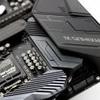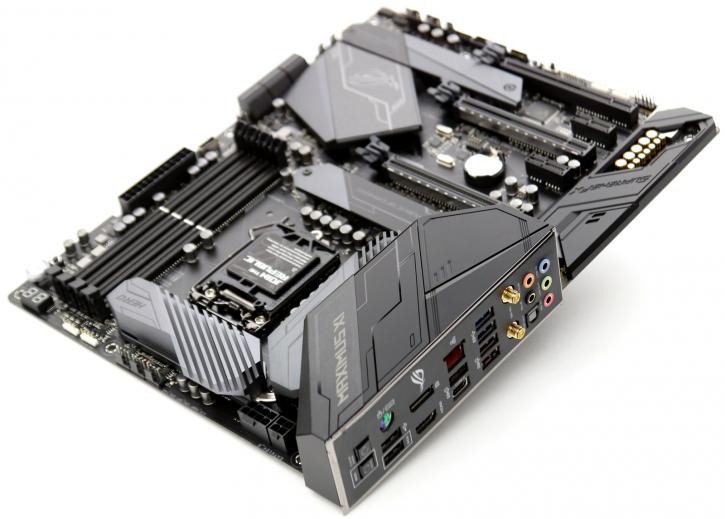Final Words & Conclusion
Conclusion
The difference between Z370 and Z390 is still a little puzzling, it, however, is a small step upwards in terms of native USB 3.1 and WIFI, that and it's better optimized on the VRM area to deal with the new 8-core processors. The new HERO ran absolutely gorgeous, we had no weird stability issues and the performance was spot on where it needs to be. What I like most, however, are the refined new aesthetics. The PCB is clean, everything is dark and the new heatsinks work out really well as well as looking really nice. Paired with that Core i9 9900K the combo does feel like proper equilibrium, really nice.I have not addressed this in the tweaking segment, but the BIOS has a new AI overclocking function, basically, it'll learn how to tweak the processor. In our case it tweaked to 5.2 GHz, however, we had stability issues and after a reboot, the AI tweak all of the sudden ran 4.9 GHz, thus much slower. Ergo, for now, we'll tweak manually. Overclocking wise we reach roughly 5.1~5.2 GHz on all eight cores 100% stable on our sample. You'll likely see some CPUs hit 5.3 and others 5.0, but it is along this range. The platform (Z370/Coffee Lake) also manages heat and power consumption at higher, but decent enough levels.
Power consumption
With this eight cores and sixteen threads proc you get a 95 Watt TDP processor. With the system at idle with a GeForce RTX 2080 Ti installed / 16 GB memory / SSD and the Z390 motherboard, I hovered at roughly 60~65 Watts in IDLE. That's okay, the load values are okay as well but definitely higher. When we stressed the processor 100% run we reach roughly 200 Watts with this 8-core part. That's the entire system. That is on the high side alright. Then again, does anyone actually care about it when you get performance metrics like shown today?
DDR4 Memory
For Coffee Lake-S (8th and 9th Gen Intel procs) and DDR4 we always say, volume matters more than frequency. A 3,200 MHz kit, for example, is more expensive and does offer better bandwidth but the performance increase in real-world usage will be hard to find. Unless you transcode videos over the processor a lot. As always, my advice would be to go with lower clocked DDR4 memory with decent timings, but get more of it. Don't go for 8 GB, get two or four DIMMs and in total a minimum of 16 GB. The reason we test at 3200 MHz is simple, we do the same for AMD Ryzen and want to create a fair and equal playing ground for both. 3200 MHz is, however, a very nice equilibrium for both processor brands.
Performance & tweaking
We tested multiple Z390 motherboards all with the latest BIOS. Once tweaked we noticed that the eight cores like a bit of extra voltage, we expect all-core tweaks in the 5.1~5.2 GHz marker to need ~1.35 Volts on the processor. While that does increase power consumption, it wasn't something that scared me away. Some platforms will and procs will also be able to manage a lower voltage. If you plan a tweak at that 5.2 GHz marker then remember my remarks on cooling, you will need LCS, that or a very good heatpipe cooler. Again, we have been using an ES sample so I cannot say anything conclusive on the final retail products (these might run a tiny bit cooler). The infrastructure that Z390 offers is easy to use, you increase the CPU voltage and multiplier and you are good to go. Another plus for the Intel platform is that over the years they have been able to refine their memory controllers, pop in anything XMP 2.0 and you have a 90% chance it'll work straight out of the box with very fast memories. Mind you that all our tests are performed at 3200 MHz DDR4, similar to Ryzen and Threadripper to remain objective and for fair play on both sides. realistically though, Ryzen is more memory frequency dependent in gaming than Intel is.
Final words
ASUS is spot on with the new Maximus XI HERO. it is a very enjoyable motherboard with a refined BIOS. We like new VRM design and heatsinks that go along with it. A bit of a miss is that ASUS stuck towards 1 Gbps Ethernet. Realtek now has 2.5 Gbps available and Aquantia 10 Gbps Ethernet. The Z390 Maximus XI Hero certainly is a nice looking product, the board kicks in nicely with exactly the right amount of RGB LEDs, and once activated it's just a completely different board to look at. The LEDs give the product really nice looks. Connectivity wise in terms of your PCIe slots for your graphics subsystem you are looking at a full x16 Gen 3 lanes for one graphics cards. The second and PCIe slot shares its lanes with the first one, ergo you'd end up at a configuration like x8/x8. The third x16 slot, in fact, is an x4 slot which draws its lanes from the chipset. We expect Coffee lake to be able to manage the 5 GHz domain on all cores with exceptions running up towards 5.2 GHz (all-core). I base this metric on high-perf air coolers or decent enough liquid cooling. From there onwards you are looking at proc ASIC quality and cooling being the more important denominator. There's little else to say other than this is a great motherboard in the mainstream segment. Highly recommended, but at the time of writing we did not have the final pricing available just yet, we expect it to be the 250 USD/EUR domain.
Handy related downloads:
- Sign up to receive a notice when we publish a new article
- Or go back to Guru3D's front page



